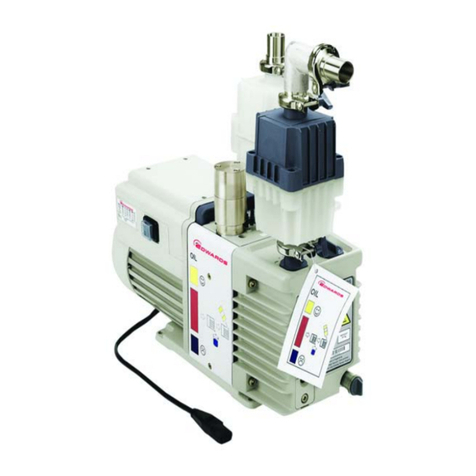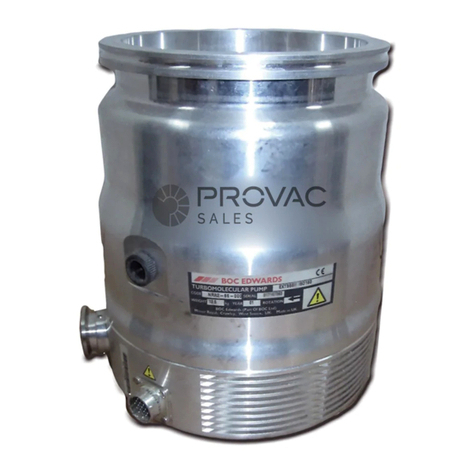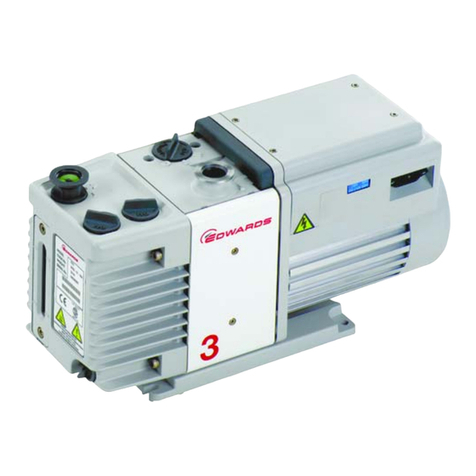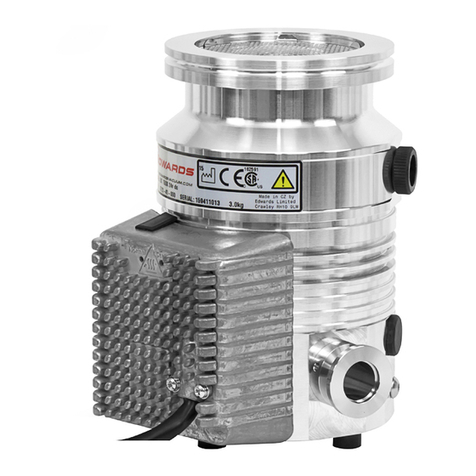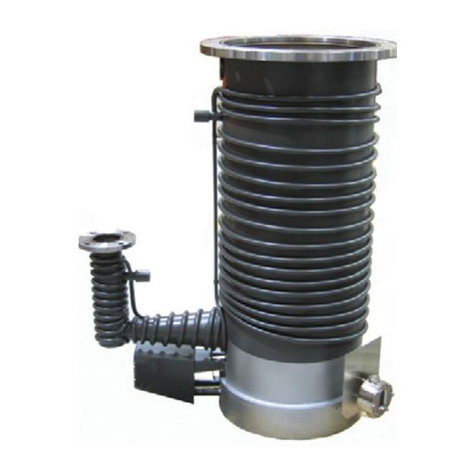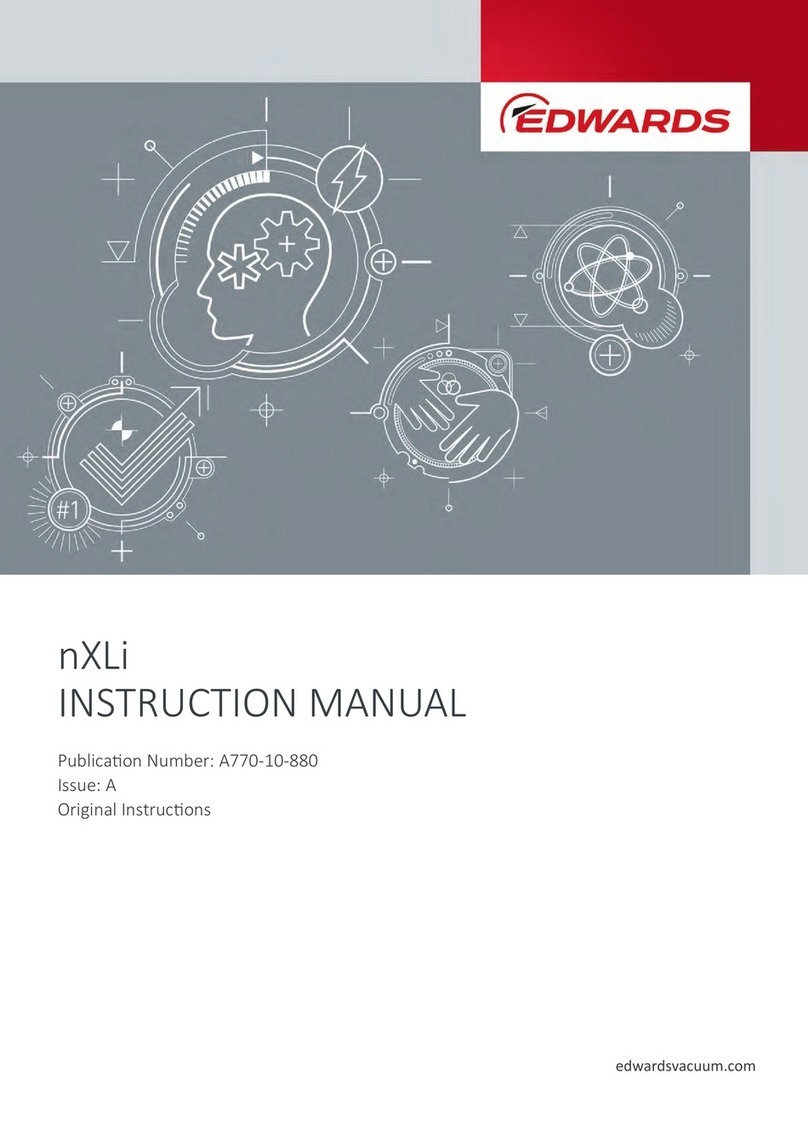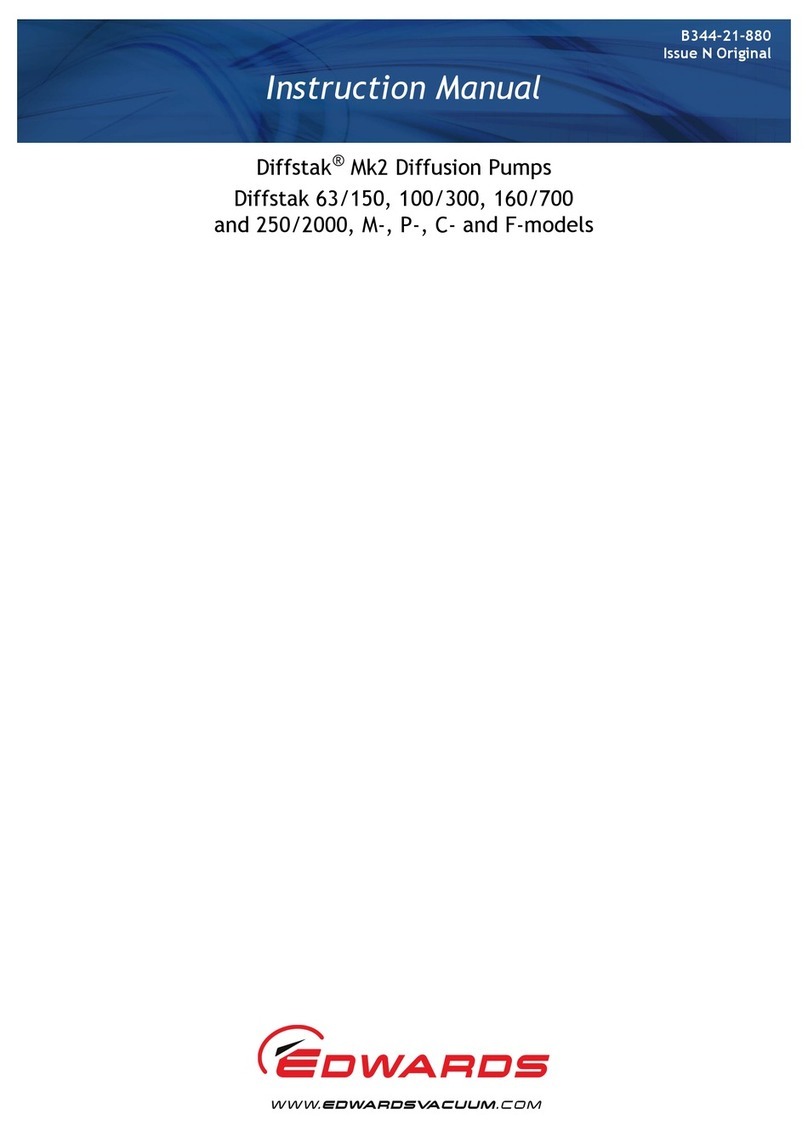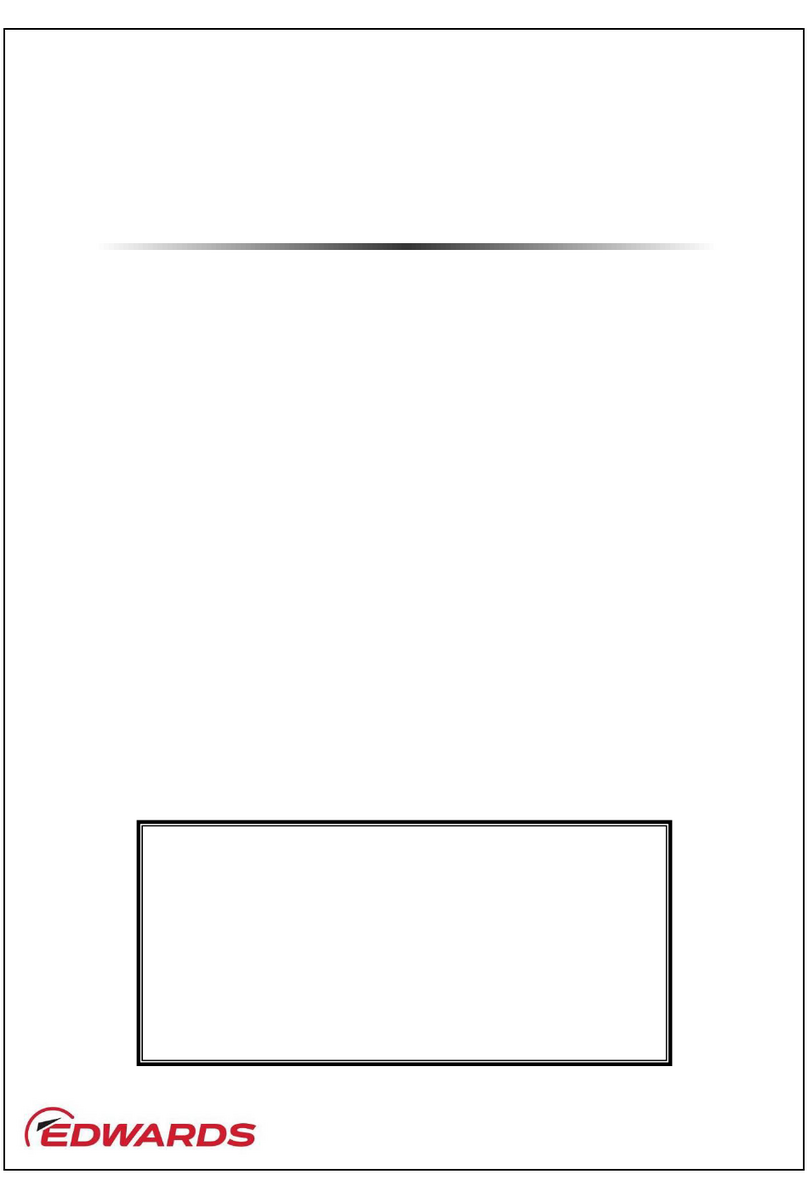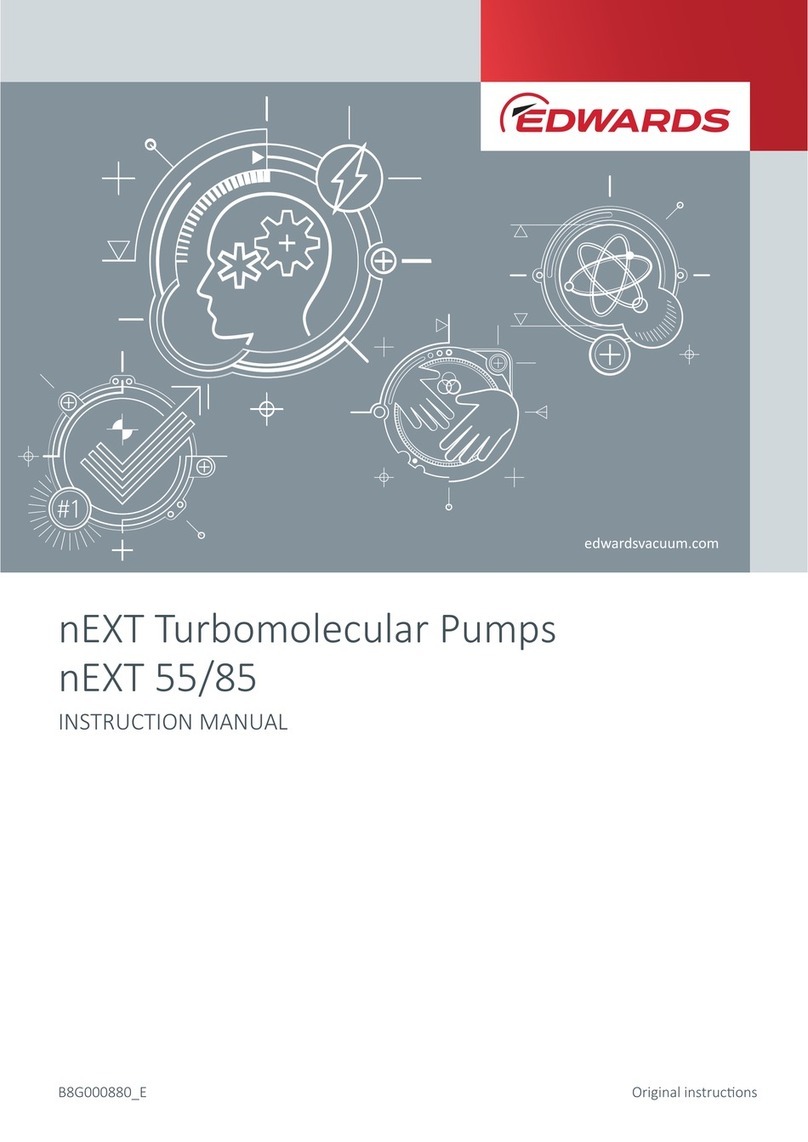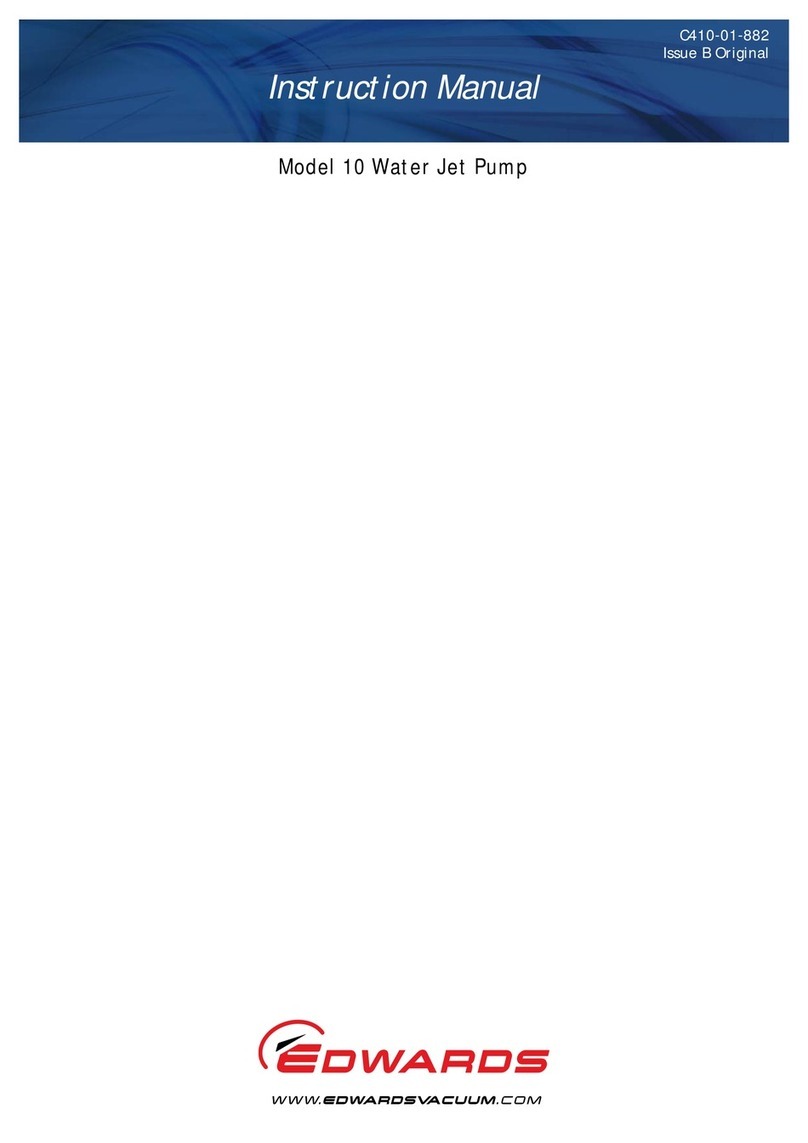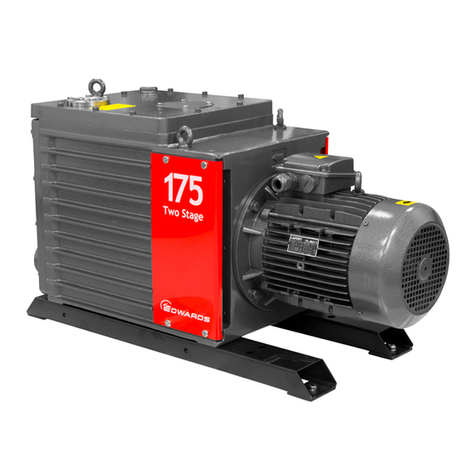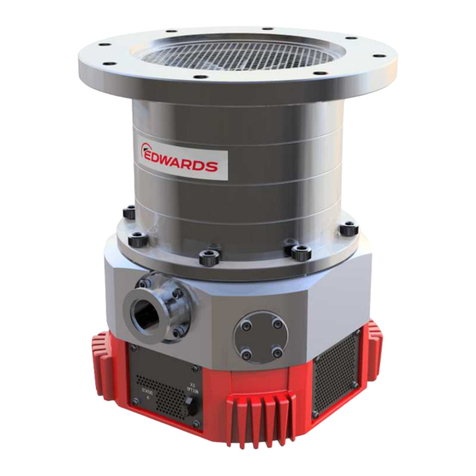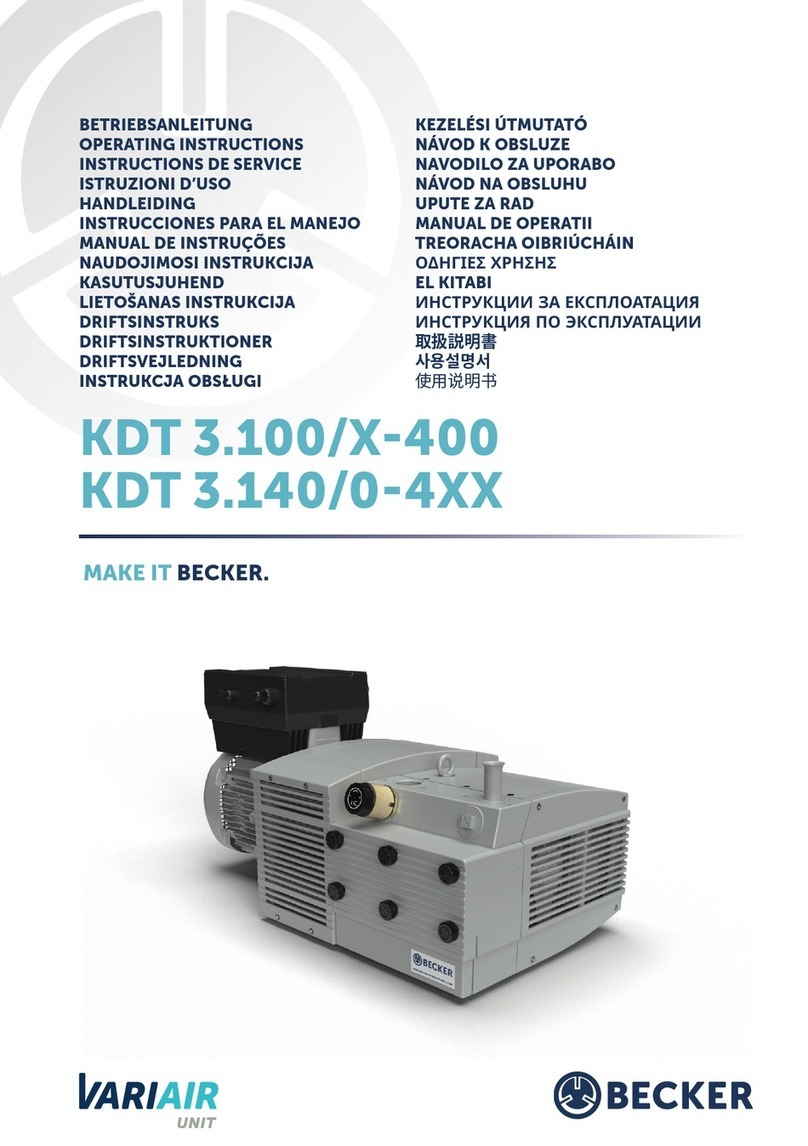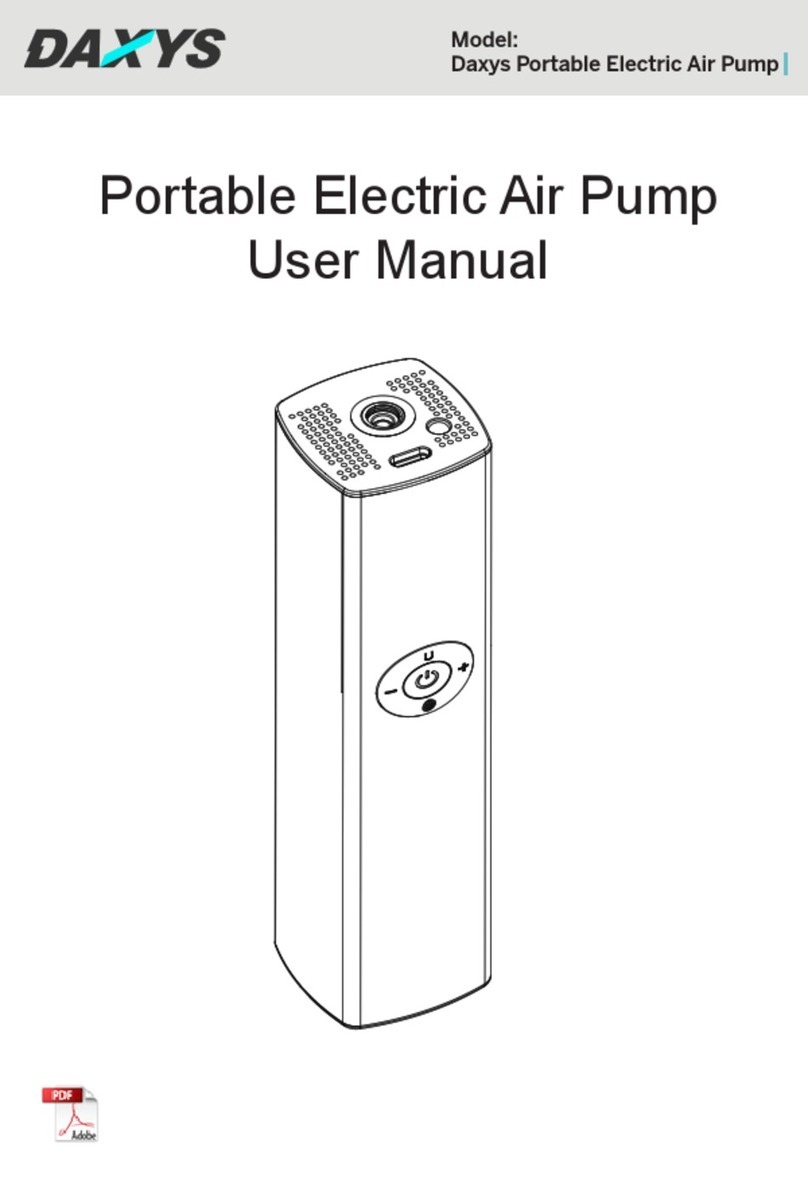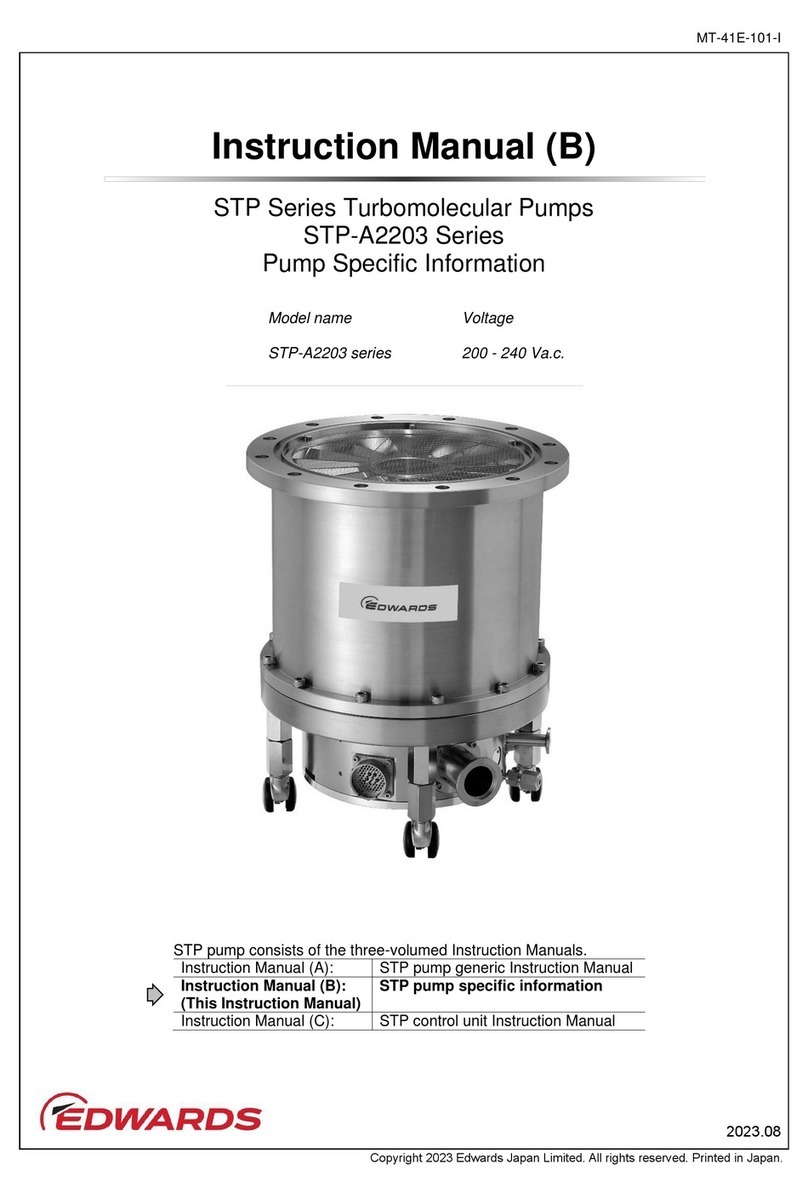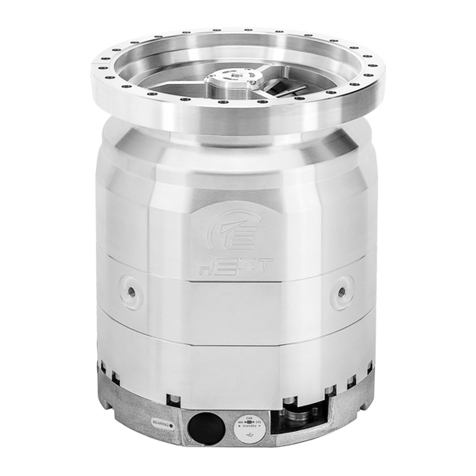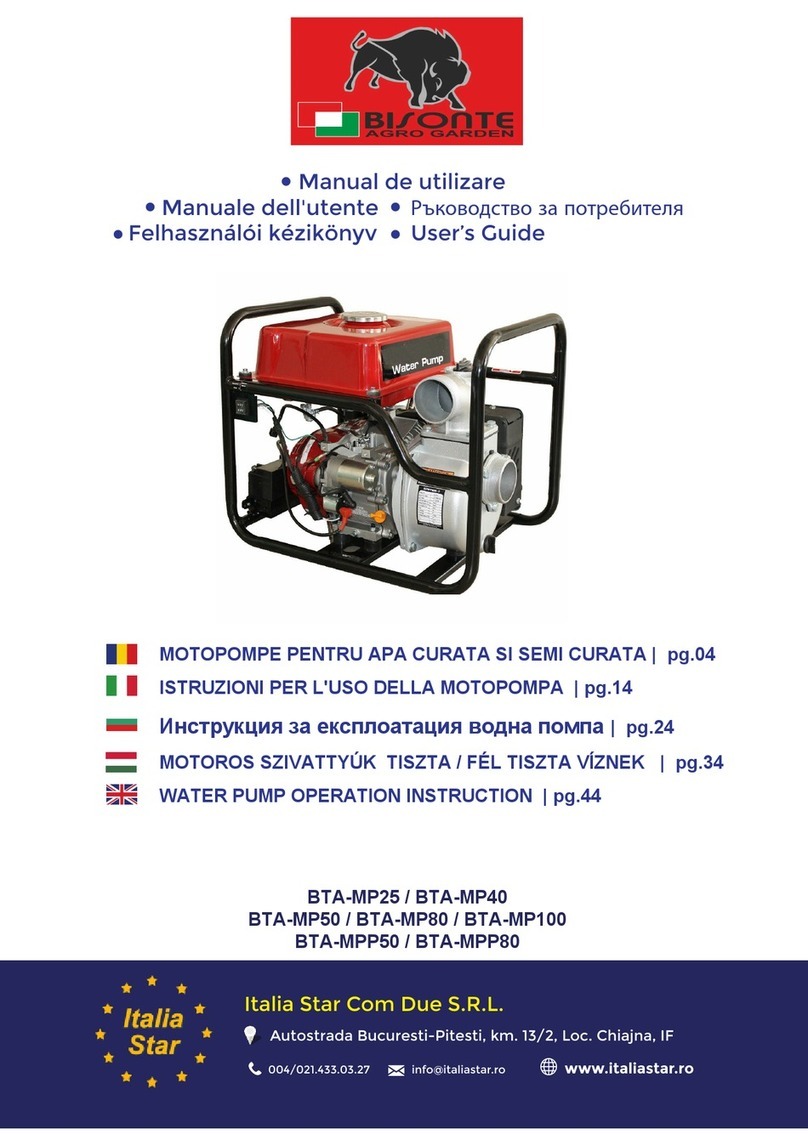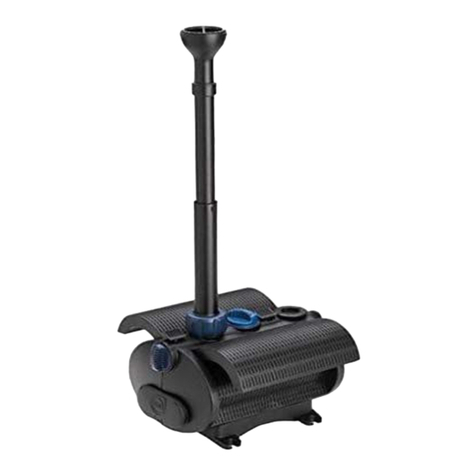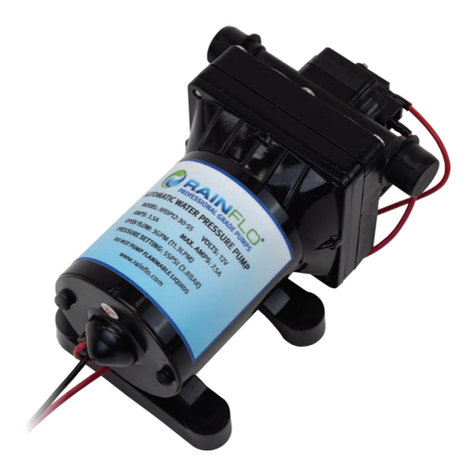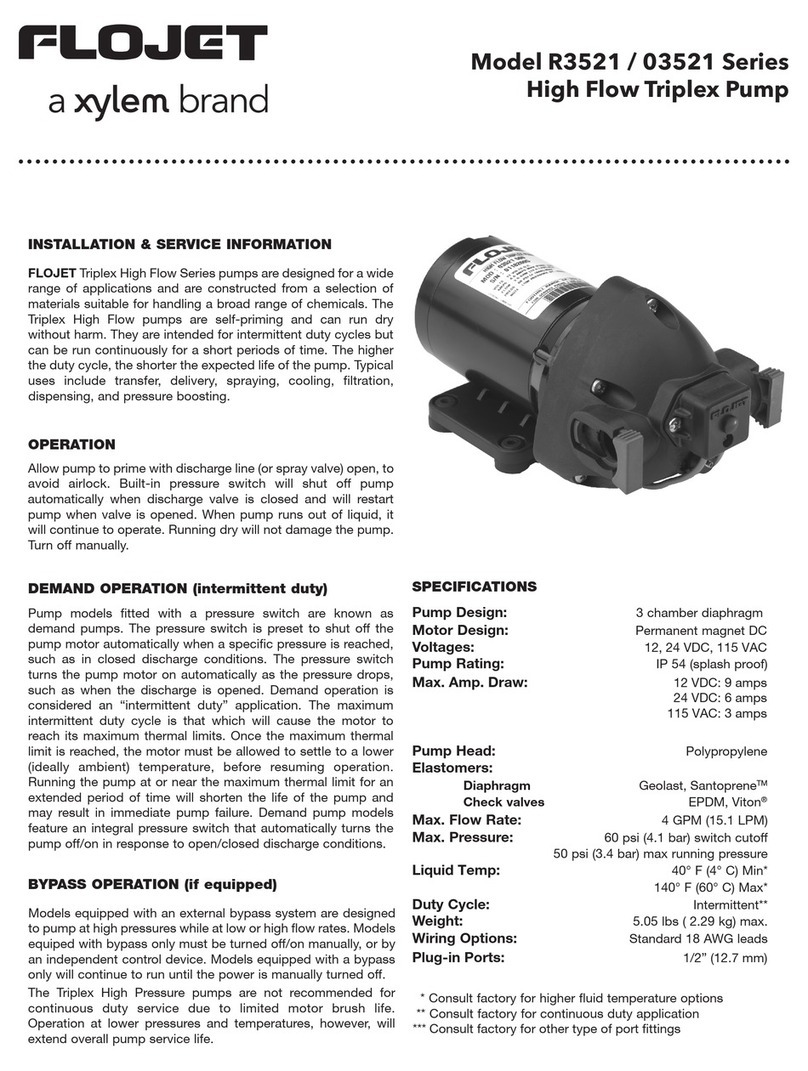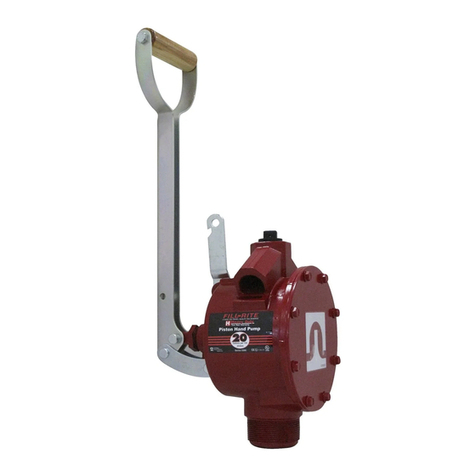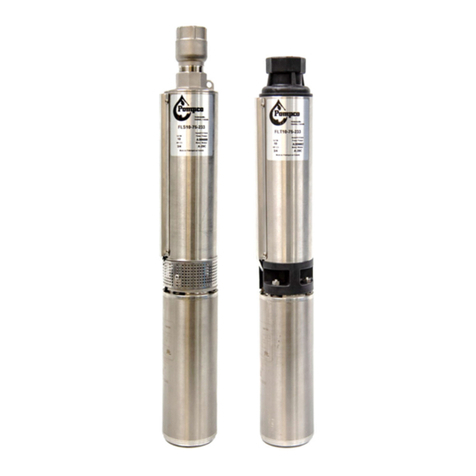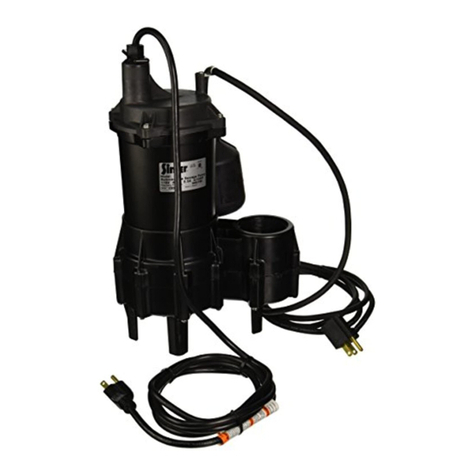EV20-630 Rotary Vane Vacuum Pumps
Oil lubricated, air-cooled
June 2010 4 Issue C
Gas Ballast
The EV pumps are fitted with gas ballast valves. These are not depicted on the pump
diagrams in this manual. The gas-ballast valve allows you to control the introduction of gas-
ballast air when pumping high vapour loads. Gas-ballast is used to reduce condensation of
the vapour carried by the pumped gases. This system reduces oil contamination and pump
corrosion caused by vapour condensing into the oil.
Safety
You must ensure that the pump is suitable for your application. A suitably trained
technician must perform the installation of the pump. The technician must be
familiar with the safety procedures that relate to the pump oil and products
processed by the pumping system. Obey the safety instructions and take note of appropriate
precautions.
Wear the appropriate safety clothing when you come into contact with contaminated
components.
The pumps can be used to generate a vacuum and will generate high pump temperatures,
especially at the oil container:
- Install pumps/compressors in a position where hot surfaces cannot be touched
- Or protect the area around them
- Or install warning signs.
To prevent the pump heating up to values exceeding specifications it is absolutely necessary
to execute each individual step of the maintenance procedures.
Application
These pumps can be used to create a vacuum.
The specification is valid up to a height of 800 m above sea level.
The pumps cannot be used for pumping of toxic or flammable materials.
Ensure that only non hazardous atmospheric air is taken in.
Transport and storage
Store pump in a dry area. Prevent condensation caused by vapour.
Lift and transport the pump using suitable lifting equipment and techniques. Use the lifting
eyes provided on the pump.
Installation
It is recommended to install the pumps with easy access for maintenance.
Clearance between pumps and adjacent walls should be no less than 10 cm of free space in
order to ensure sufficient airflow for cooling.
Ambient temperatures must not exceed 45°C.
Please refer to the addendum sheet, which details further installation instructions.
Connection and installation
Ensure correct dimensions and clean pipelines (no weld spatter, chips or similar contamination).
The diameter of the pipelines should at least equal that of the threads. For pipeline lengths of
more than 2 m use the next larger line diameter. Keep connections free from oil, grease and
water or other contaminations.
Fill the pump with oil
Use vacuum pump oil Ultragrade 20.
Screw-off oil inlet cover and fill-in oil up to the maximum of the inspection glass MA.
Remove protective caps at LA and SA. Don’t connect to the pipelines yet.
See the table below for oil quantities:
EV20 0.5 0.13
EV40 1 0.26
EV70 2 0.53
EV100 2 0.53
EV160 7 1.85
EV200 7 1.85
EV300 7 1.85
EV400 15 3.96
EV630 15 3.96
Oil Capacity
Pump T ype
Motor connection
Ensure that the electrical installation of the pump conforms to your local and national safety
requirements as required by EN 60402 Pt1.
Connect motor based on connecting diagram (in terminal box). An experienced electrician
should carry out this work only. Check for connecting voltage, nominal current and frequency.
Install motor circuit breaker and set to nominal motor current. (For data see motor rating plate).
Briefly start motor and check rotation (arrow on casing). Exchange phases if rotation
is incorrect.
Avoid switching on more than 10 times per hour.
The pump must not automatically restart when power is restored.
Commissioning
Connect intake line at SA.
WARNING: DON’T THROTTLE OR BLOCK AIR DISCHARGE LA OR USE AS A
COMPRESSED AIR OUTLET.
Ensure the exhaust pipeline diameter is equal to or greater than the air discharge LA.












